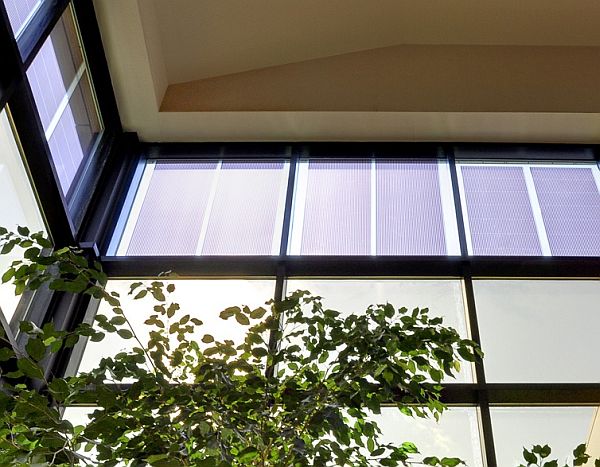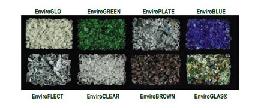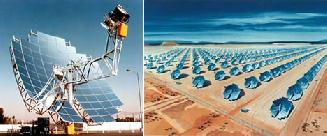
Konarka Technologies Inc has announced the largest Organic Photovoltaic ( OPV ) installation at its headquarters building in New Bedford, Massachussetts. Konarka has installed OPV panels on seven east and south facing windows of 56″ x 67 “. This would lead to the adoption of the trend of Building Integrated Photovoltaics ( BIPV ) in place of the practice of thinking of photovolataics for say, a roof-top installation after the building is designed and built.
Organic photovoltaic panels are coatings that can be printed on to a substrate in a roll-to-roll manufacturing process, much like the process used to print newspapers. The resultant panel is flexible unlike the crystalline silicon panels now used which are rigid. Konarka’s OPV panels are semi-transparent and can be laminated on to window glass panels. This has the attraction that in a commercial building, the vertical faces have the potential to generate solar power whereas with the rigid silicon based panels only the much smaller roof area is available for solar panels. OPVs are expected to be able to convert not just the visible spectrum of solar radiation but also the infrared part which would make them more productive especially when the sky is overcast.
The questions that remain:
While these are very promising developments, many questions still remain. The primary concern is about the cost. Presently available rigid silicon solar panels are expensive and the cost sums up to $11,000 per kilowatt hour of energy to install. This high cost has meant that solar power needs significant government subsidies for adoption. The secondary concern is with the life of these coatings. There is, as yet, no information on the life of these solar panels. The present silicon panels have a life around 25 years with minimal maintenance costs. It seems probable that OPV panels would have significantly lower life based on the process of application to glass or other substrates. Whether the whole window needs to be replaced or the OPV can be reapplied in-situ is also a matter of concern.
The Benefits:
Konarka panels have claimed a laboratory report of 8.3% efficiency in converting incident solar energy into useful power. Their own previous OPV panels had only about 2% efficiency and the silicon solar panels have 12-15% efficiency. To be sure, as technology evolves, these efficiencies would increase. OPV panels already have one plus point over silicon panels, they need less energy to produce. The present OPV is said to be the only semi-transparent which suggests that its usage on windows or on curtain walls would reduce reflection and thus the natural light is made available for the use inside the buildings to supplement artificial lighting. This feature along with the architectural appearance of OPV coated windows could determine user acceptance of this new development.]
Via: Konarka Technologies Inc




